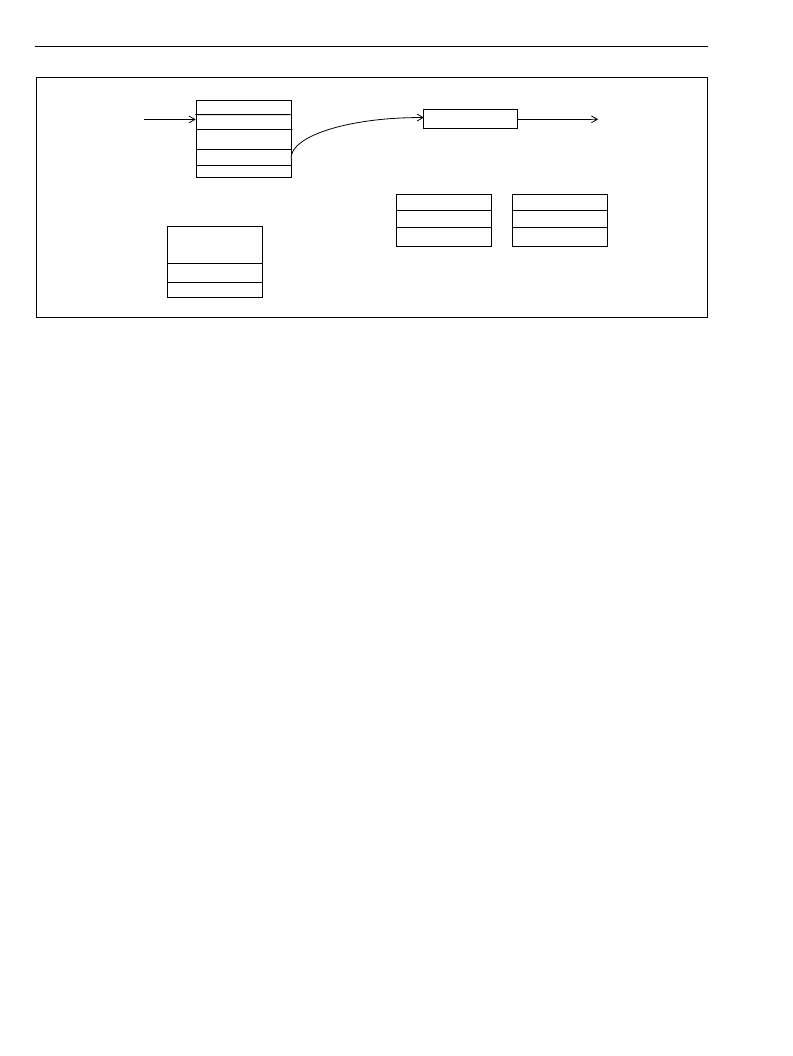- 您現(xiàn)在的位置:買(mǎi)賣(mài)IC網(wǎng) > PDF目錄383645 > MT90812 (Mitel Networks Corporation) Integrated Digital Switch (IDX)(集成數(shù)字開(kāi)關(guān)) PDF資料下載
參數(shù)資料
| 型號(hào): | MT90812 |
| 廠商: | Mitel Networks Corporation |
| 英文描述: | Integrated Digital Switch (IDX)(集成數(shù)字開(kāi)關(guān)) |
| 中文描述: | 綜合數(shù)字交換機(jī)(IDX的)(集成數(shù)字開(kāi)關(guān)) |
| 文件頁(yè)數(shù): | 24/105頁(yè) |
| 文件大?。?/td> | 334K |
| 代理商: | MT90812 |
第1頁(yè)第2頁(yè)第3頁(yè)第4頁(yè)第5頁(yè)第6頁(yè)第7頁(yè)第8頁(yè)第9頁(yè)第10頁(yè)第11頁(yè)第12頁(yè)第13頁(yè)第14頁(yè)第15頁(yè)第16頁(yè)第17頁(yè)第18頁(yè)第19頁(yè)第20頁(yè)第21頁(yè)第22頁(yè)第23頁(yè)當(dāng)前第24頁(yè)第25頁(yè)第26頁(yè)第27頁(yè)第28頁(yè)第29頁(yè)第30頁(yè)第31頁(yè)第32頁(yè)第33頁(yè)第34頁(yè)第35頁(yè)第36頁(yè)第37頁(yè)第38頁(yè)第39頁(yè)第40頁(yè)第41頁(yè)第42頁(yè)第43頁(yè)第44頁(yè)第45頁(yè)第46頁(yè)第47頁(yè)第48頁(yè)第49頁(yè)第50頁(yè)第51頁(yè)第52頁(yè)第53頁(yè)第54頁(yè)第55頁(yè)第56頁(yè)第57頁(yè)第58頁(yè)第59頁(yè)第60頁(yè)第61頁(yè)第62頁(yè)第63頁(yè)第64頁(yè)第65頁(yè)第66頁(yè)第67頁(yè)第68頁(yè)第69頁(yè)第70頁(yè)第71頁(yè)第72頁(yè)第73頁(yè)第74頁(yè)第75頁(yè)第76頁(yè)第77頁(yè)第78頁(yè)第79頁(yè)第80頁(yè)第81頁(yè)第82頁(yè)第83頁(yè)第84頁(yè)第85頁(yè)第86頁(yè)第87頁(yè)第88頁(yè)第89頁(yè)第90頁(yè)第91頁(yè)第92頁(yè)第93頁(yè)第94頁(yè)第95頁(yè)第96頁(yè)第97頁(yè)第98頁(yè)第99頁(yè)第100頁(yè)第101頁(yè)第102頁(yè)第103頁(yè)第104頁(yè)第105頁(yè)

MT90812
Advance Information
20
Figure 15 - Conference Control with Conference Party Control Registers and Connect Memory
6.1
Channel Attenuation
Channel Attenuation is provided on incoming and outgoing channels that are in a conference. The gain can
range from +3 to -27 dB in steps of 1dB, as well as -
dB for the incoming PCM data and +0 to -9 dB in steps of
3dB for outgoing PCM data. If an overflow condition occurs, then the input from each channel in a conference
can be independently attenuated, by setting the incoming channel attenuation bits in CMH for the specific
conference party. The outgoing gain bits are in the Conference Party Control register.
6.2
Noise Suppression and Channel Inversion
Channel inversion and noise suppression bits are specified in Connect Memory High for locations 60-6E
H
.
When noise suppression is enabled for a specific input channel, then the PCM bytes for this channel, when
below the selected threshold level, are converted to PCM bytes corresponding to the minimum PCM code level
before being added to the conference sum. The four threshold levels available correspond to the first, fifth,
ninth, and sixteenth step of the first segment. These are 1/4096, 9/4096, 16/4096, and 32/4096 with respect to
full scale A-law, and 1/8159, 9/8159, 16/8159, and 32/8159 with respect to full scale ulaw. The threshold level
is set using the threshold bits NS1, NS0.
The inversion bit allows for every other channel in a conference to be inverted. This reduces noise due to
reflections and line impedance mismatch.
6.3
Tone Insertion
As a party is added to a conference, if the insertion tone bit (IT) is set, all channels connected in a conference
will have the tone added to the conference output. This allows for conference users to be informed of a new
party being added to the conference, or to be reminded that they are in a conference.
The DM address of the desired tone must be programmed at location 6F
H
of CML, (16F
H
non-mux mode, EF
H
for mux-mode addressing). The tone source may be from any location in DM, including any of the 32 tones
from the Tone Generation block. The PCM data from the specified Data Memory location will be added to the
conference output for a specified tone duration.
The tone duration is specified in the Conference Control Register (CC). Refer to Section 22.10 for a description
of the Conference Control Register (CC). The tone duration can be set from 0.125 to 1.0 seconds in steps of
0.125 seconds. The tone duration is from the time the party is added to the conference by writing the
Conference Party Control Register.
CID,ST,IT,GCout
Data Memory
Connect Memory
60-6E
H*
Control Registers
Parallel to Serial
Output Stream
GCin,Inv,NS
30-3E
HEX
Low
Incoming Channel
High
Conference Output
60-6E
H*
6F
H
*in Non-mux micro-port mode the addresses for DM,CML and CMH are 060-06E, 160-16E and
260-26E respectively and the control registers addresses are 3B0-3BE. For mux-mode the addresses
DM,CML and CMH are E0-EE and the control registers addresses are 30-3E with the appropriate
page selected in the AMS register.
Incoming Data
Incoming Channel
Insertion Tone
Gain
Conf Party Control
∞
相關(guān)PDF資料 |
PDF描述 |
|---|---|
| MT90840AK | Distributed Hyperchannel Switch |
| MT90840AP | Distributed Hyperchannel Switch |
| MT9085B | PAC - Parallel Access Circuit(并行存取電路) |
| MT9092 | Digital Telephone with HDLC(數(shù)字電話(huà)(帶高階數(shù)據(jù)鏈路控制HDLC)) |
| MT9092 | ISO2-CMOS ST-BUS⑩ FAMILY Digital Telephone with HDLC (HPhone-II) |
相關(guān)代理商/技術(shù)參數(shù) |
參數(shù)描述 |
|---|---|
| MT90812AL | 制造商:Microsemi Corporation 功能描述:SWIT FABRIC 192 X 192 16.384MBPS 5V 64MQFP - Trays 制造商:Zarlink Semiconductor Inc 功能描述:SWIT FABRIC 192 X 192 16.384MBPS 5V 64MQFP - Trays |
| MT90812AL1 | 制造商:Microsemi Corporation 功能描述:SWIT FABRIC 192 X 192 16.384MBPS 5V 64MQFP - Trays 制造商:Microsemi Corporation 功能描述:PB FREE INTEGRATED DIGITAL SWITCH |
| MT90812AP | 制造商:MITEL 制造商全稱(chēng):Mitel Networks Corporation 功能描述:Integrated Digital Switch (IDX) |
| MT90812AP1 | 制造商:Zarlink Semiconductor Inc 功能描述:SWIT FABRIC 192 X 192 16.384MBPS 5V 68PLCC /BAKE/DRYPACK - Rail/Tube 制造商:Zarlink Semiconductor Inc 功能描述:INTEGRATED DIGITAL SWCH |
| MT90812APR | 制造商:Microsemi Corporation 功能描述:SWIT FABRIC 192 X 192/64 X 64 1.048GBPS 5V 68PLCC - Tape and Reel |
發(fā)布緊急采購(gòu),3分鐘左右您將得到回復(fù)。